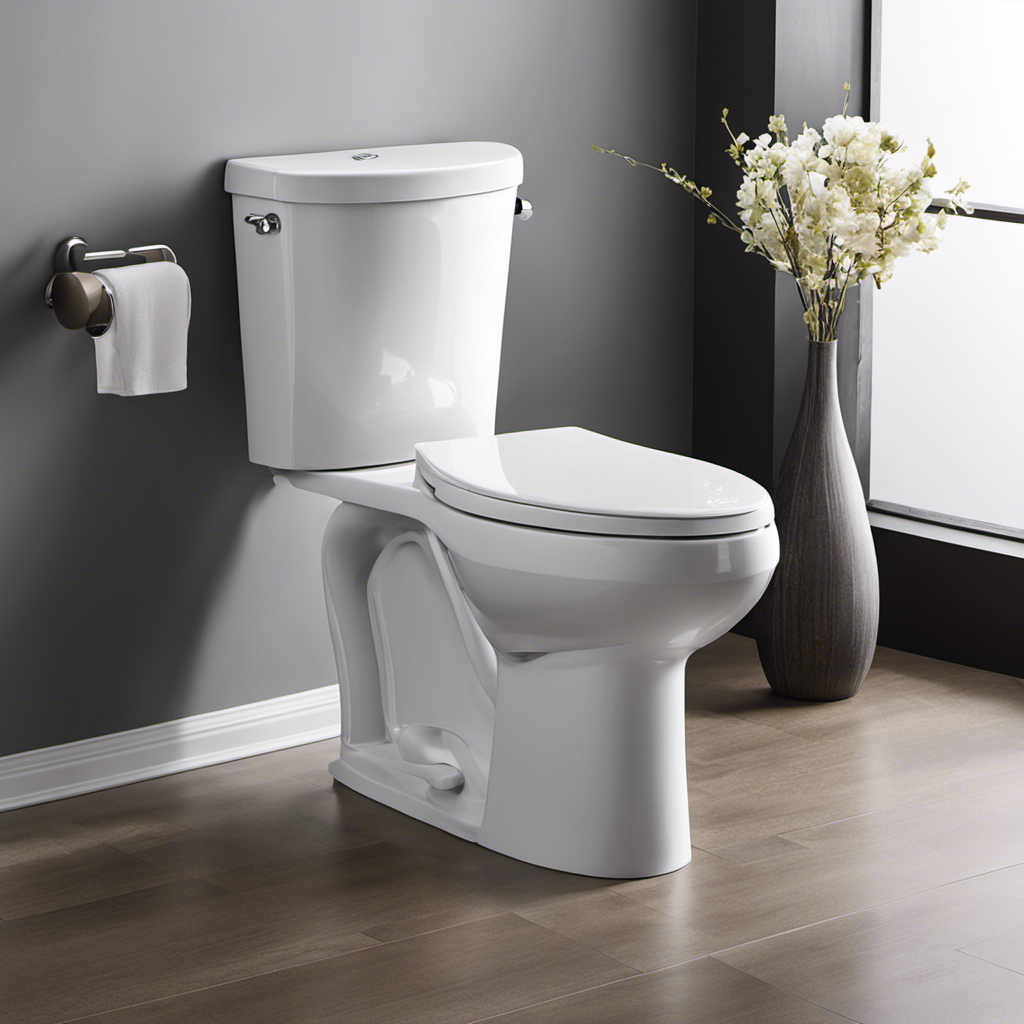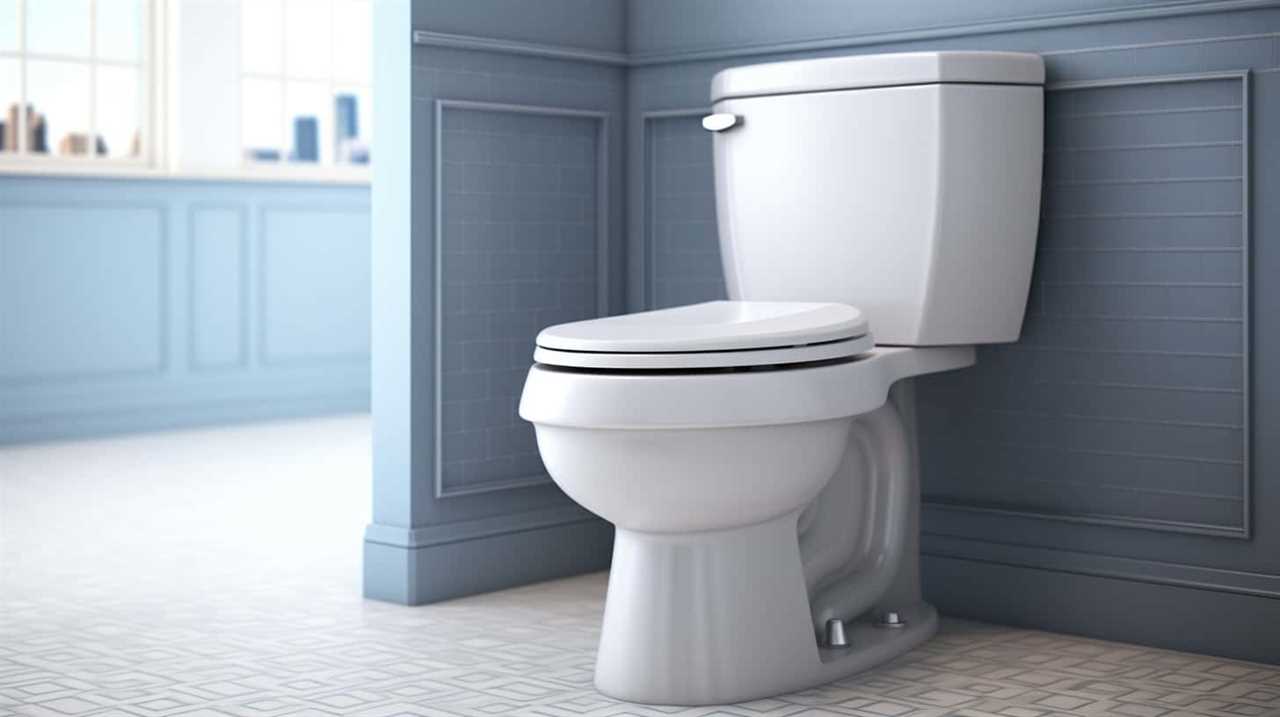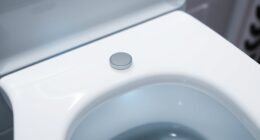Oh, the unassuming dental floss, tiny and apparently innocuous. But have you ever pondered whether it’s alright to dispose of it down the toilet? Well, come together, fellow aficionados of flossing, as we set out on a journey to discover the reality behind this ostensibly trivial behavior.
In this article, we’ll explore the environmental impact, potential plumbing problems, and alternative disposal methods for dental floss. So, before you toss that floss, let’s dive into the depths of this ever-important question.
Key Takeaways
- Dental floss contributes to water pollution when flushed down the toilet.
- Flushing dental floss can cause clogging in sewage systems and damage pipes.
- Marine organisms can mistake dental floss for food or become entangled in it, leading to injury or death.
- Proper disposal in the trash bin is crucial to protect waterways, ecosystems, and plumbing systems.
The Environmental Impact of Flushing Dental Floss
The disposal of dental floss through flushing has detrimental environmental consequences. When dental floss is flushed down the toilet, it can contribute to water pollution and harm the delicate balance of marine ecosystems.
The synthetic material of dental floss doesn’t break down easily and can accumulate in water bodies, posing a threat to aquatic life. Marine organisms can mistake dental floss for food or become entangled in it, leading to injury or even death.

Additionally, the chemicals and substances present in dental floss, such as wax coatings or antimicrobial agents, can leach into the water, further contaminating the marine environment.
It’s crucial to dispose of dental floss properly by placing it in the trash, rather than flushing it, in order to protect our waterways and the diverse ecosystems they support.
Potential Plumbing Problems Caused by Flushing Dental Floss
Flushing dental floss down the toilet can lead to potential plumbing problems that may affect our homes and require costly repairs.
Here are three reasons why flushing dental floss can cause damage to sewage systems and potential clogging:

- Clogging: Dental floss isn’t biodegradable and can easily get tangled with other materials in the sewage system, leading to blockages. These blockages can cause toilets to overflow, drains to back up, and sewage to leak into our homes.
- Pipe damage: The thin and string-like nature of dental floss allows it to wrap around pipes and create knots. Over time, this can cause damage to the pipes, leading to leaks and cracks that require expensive repairs.
- Sewage system strain: Flushing dental floss adds unnecessary strain on sewage systems. Municipal sewage systems are designed to handle water, waste, and toilet paper, but not dental floss. The accumulation of dental floss in the system can disrupt the flow and efficiency of the sewage system, leading to backups and potential environmental hazards.
To avoid these potential plumbing problems and costly repairs, it’s best to dispose of dental floss in the trash bin instead of flushing it down the toilet.
Alternatives to Flushing Dental Floss Down the Toilet
Our preferred alternative to flushing dental floss down the toilet is disposing of it in our trash bin. Not only is this method more eco-friendly, but it also prevents potential plumbing problems. By throwing dental floss in the trash, we ensure that it doesn’t end up in our water systems or contribute to clogged pipes.
However, if you’re looking for more creative ways to reuse dental floss, there are a few options. Some people use it for arts and crafts projects or even as a fishing line. While these ideas may be fun and resourceful, it’s important to remember that proper disposal methods for dental floss are crucial to maintaining a healthy and functional plumbing system.
Proper Disposal Methods for Dental Floss
To maintain a healthy and functional plumbing system, it’s important to properly dispose of dental floss. Improper disposal can lead to clogs and blockages in the pipes, causing expensive repairs and damage to the waste management infrastructure.
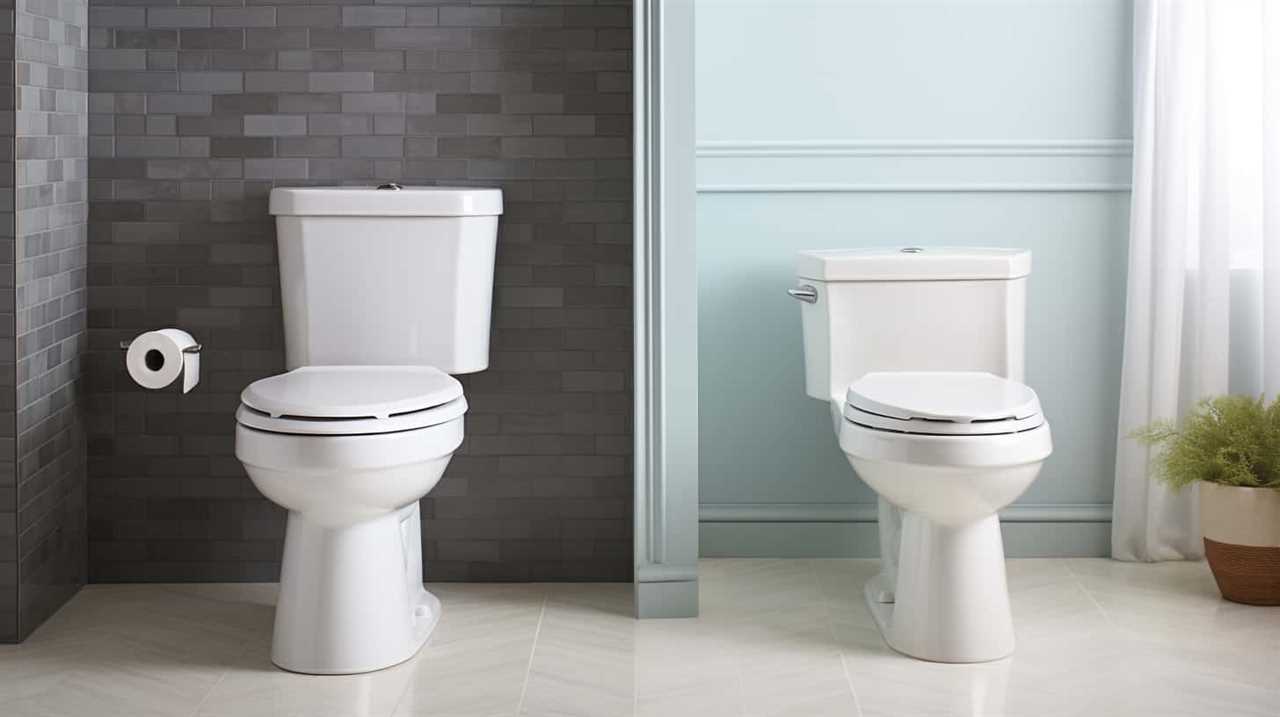
Here are three proper disposal methods for dental floss:
- Trash Can: The simplest and most common method is to wrap used dental floss in tissue or toilet paper and throw it in the trash. This ensures that the floss ends up in the landfill, where it can decompose naturally.
- Recycling Programs: Some waste management facilities accept dental floss for recycling. Check with your local recycling center or waste management company to see if they’ve specific guidelines for recycling dental floss.
- Biodegradable Floss: Consider using biodegradable dental floss made from natural materials that can break down easily in the environment. This option reduces waste and minimizes the impact on the waste management system.
FAQs About the Disposal of Dental Floss
When it comes to disposing of dental floss, many people have questions. One common question is how to properly store dental floss before disposing of it. It’s important to keep dental floss in a clean and dry place, away from moisture or humidity, to prevent it from becoming a breeding ground for bacteria.
Another frequently asked question is whether there are biodegradable options available for dental floss. The good news is that there are biodegradable dental floss options made from natural materials such as silk or plant-based fibers. These biodegradable options are environmentally friendly and break down naturally over time, reducing the impact on our planet.
Frequently Asked Questions
Is Dental Floss Biodegradable?
Dental floss is not biodegradable, which means it does not break down naturally. When flushed down the toilet, it can end up in marine ecosystems, causing harm to marine life.

Can Flushing Dental Floss Cause Blockages in the Sewage System?
Flushing dental floss down the toilet can cause toilet clogs and have negative environmental impacts. It’s important to dispose of dental floss properly to prevent blockages in the sewage system.
Are There Any Eco-Friendly Alternatives to Dental Floss?
Looking for eco-friendly dental floss options? Let’s delve into the impact of dental floss on the environment. There are alternatives like bamboo or silk floss that are biodegradable and kinder to our planet.
Can Dental Floss Be Recycled?
Yes, dental floss can be recycled, but it requires proper disposal in specialized recycling facilities. The environmental impact of dental floss is significant, so recycling is a responsible choice to reduce waste.
Is There a Proper Way to Dispose of Dental Floss in the Trash?
Proper disposal of dental floss in the trash is recommended to minimize its environmental impact. Flushing it down the toilet can lead to clogs and damage to sewage systems.
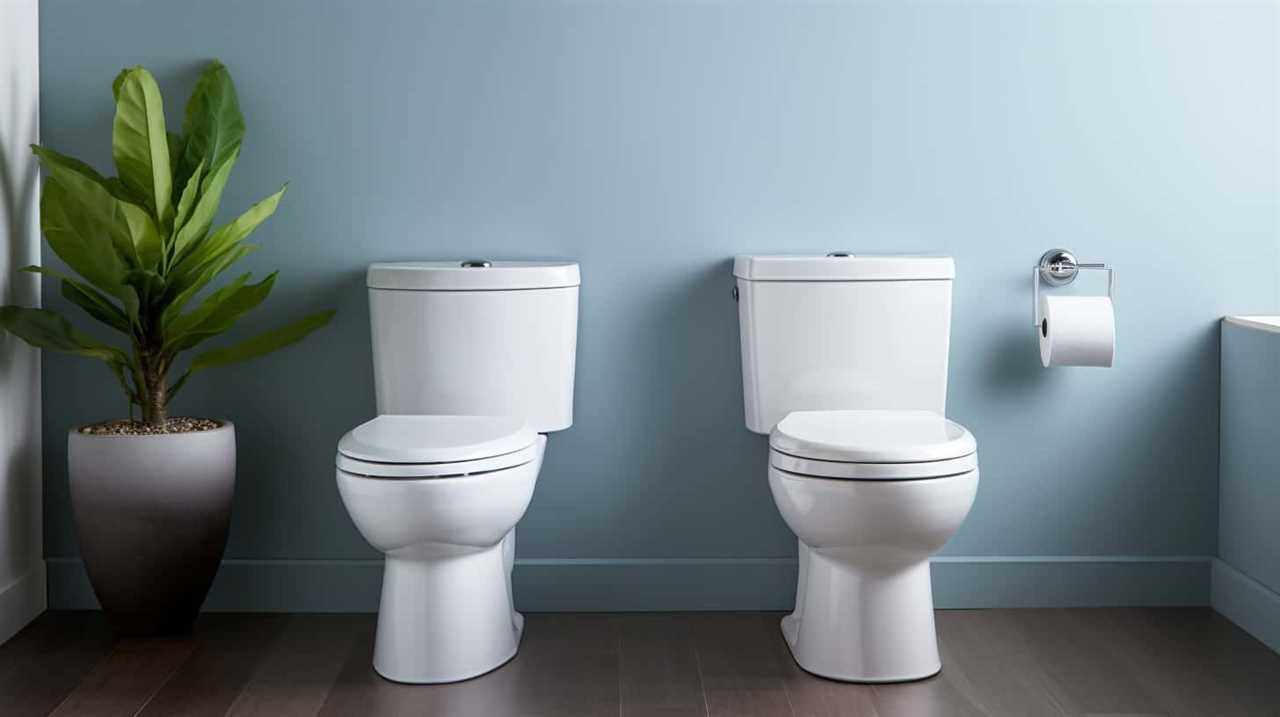
Conclusion
In conclusion, it isn’t advisable to flush dental floss down the toilet. Not only does it have a negative environmental impact, but it can also cause potential plumbing problems.
Instead, consider using alternatives such as biodegradable floss or simply disposing of it in the trash. By making small changes in our daily habits, we can contribute to a healthier environment and avoid unnecessary plumbing issues.
Remember, every small action counts towards a better future.



